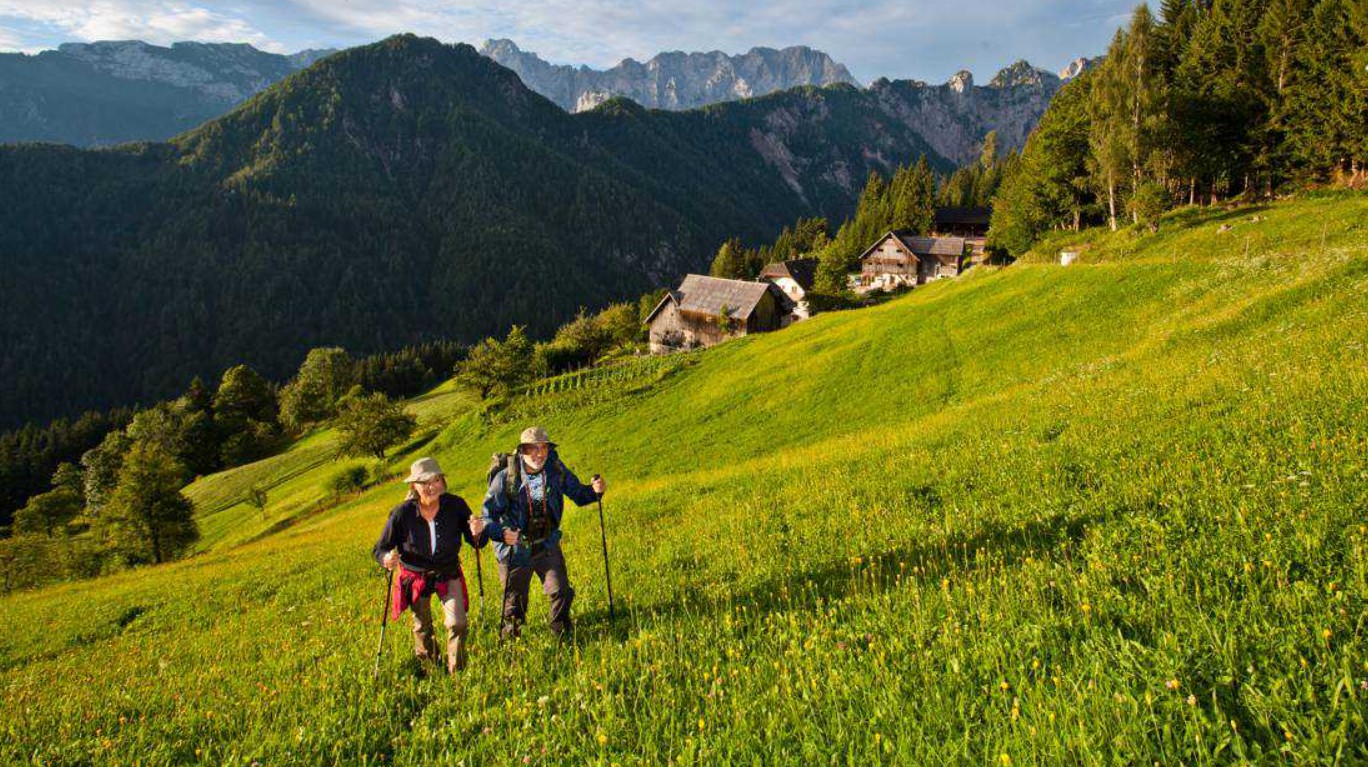If you love combining restful stays with outdoor adventure, choosing accommodations with hiking opportunities is essential.
Such lodgings don’t just provide a roof over your head — they put you steps away from trails, nature, and immersive treks.
In this article, we’ll explain why these accommodations are valuable, how they benefit travelers, review real examples around the world, compare lodging types, discuss gear and booking tips, and help you pick the right option for your hiking trip.
Why Choose an Accommodation That Offers Hiking Access
Staying close to trails simplifies logistics. You won’t have to drive or take transport to trailheads, saving time and energy.
At dawn or dusk, you can step out your door and walk directly onto scenic paths. Such accommodations often blend natural ambiance, guided hikes, and curated experiences.
These lodgings frequently offer amenities tailored for hikers — gear storage, trail info desks, guided treks, shuttle drops to remote trailheads, and pre-packed meals.
This is a combination of comfort and adventure that appeals to many travelers.
What to Look for in a Hiking-Friendly Lodging
Before booking, check these critical factors:
- Trail proximity & direct access. The closer the trail, the better (ideally from the property).
- Trail difficulty & variety. Does the lodging provide options for beginner, intermediate, or advanced trails?
- Amenities for hikers. Drying rooms, boot cleaning areas, maps/guides, shuttle services.
- Safety & orientation. Are there guided hikes, trail signage, or staff support?
- Booking & cancellation flexibility. Trail conditions can change; flexible bookings help.
- Sustainability and environmental practices. Lodgings in sensitive natural areas should practice low impact tourism.
Benefits of Staying at Hiking-Access Lodgings
- Convenience & time savings. You start your day already in nature, without driving or commuting.
- Better rest & recovery. After a long hike, you return quickly to comfort — minimizing fatigue.
- More immersion in nature. You can take short sunset or dawn walks directly from your lodging.
- Enhanced safety. Guidance, local knowledge, and easier exit in emergencies.
- Community & social experience. Many such lodgings host group hikes or social dinners fostering connection.
- Cost-effectiveness. Cutting transport to/from trailheads can lower overall trip cost.
Real-World Examples of Accommodations with Hiking Opportunities
Below are five real lodgings that are exemplary for hikers. For each, I detail location, trail access, features, pros/cons, pricing (if available), booking options, and use cases.
Fairmont Chateau Lake Louise (Canada)
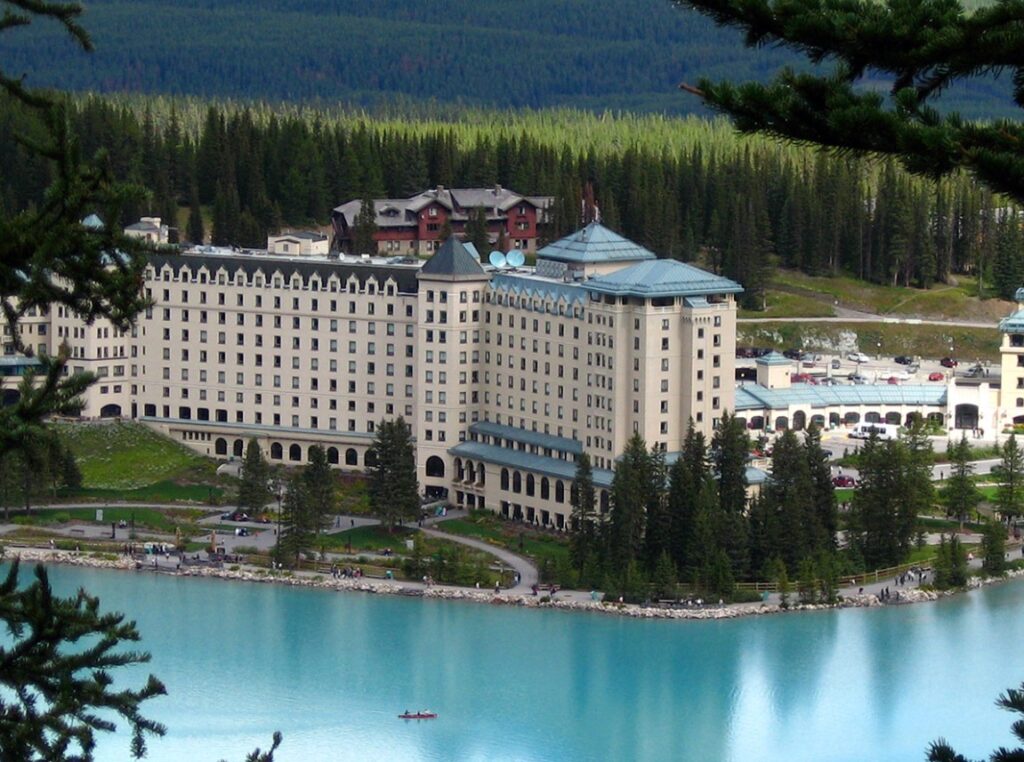
This luxury hotel sits right on Lake Louise’s shoreline in Banff National Park. From the hotel, numerous iconic trails like Plain of Six Glaciers and Big Beehive begin nearby.
Features & Trail Access
- Direct access to lakeside trails and mountain foothill paths
- Offers guided hiking tours and trail maps
- Full services (spa, fine dining, gear concierge)
Pros
- High comfort and full amenities
- Prime location with exceptional scenery
- Excellent service and trail support
Cons
- Premium cost per night
- Can be crowded in peak season
- Some trails accessible only with shuttle or transfer
Pricing & Booking
- Rooms start at luxury hotel rates (often several hundred USD per night). You can book via the official website or major booking platforms.
- Use case: ideal for hikers who also want luxury and small walking excursions from the hotel.
Rifugio Lagazuoi (Italy)
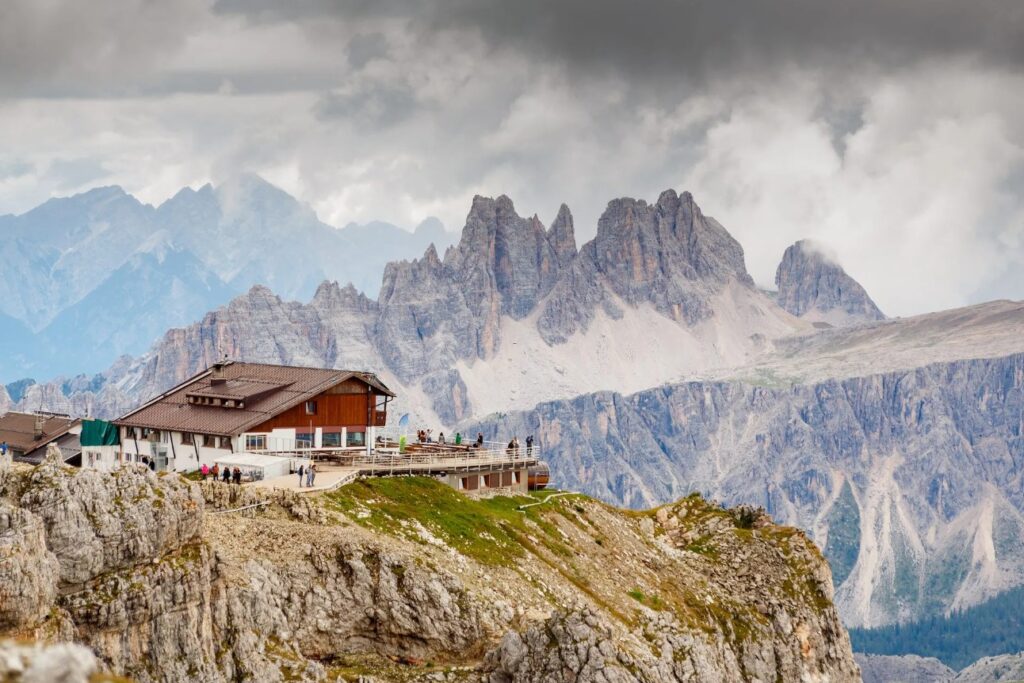
This mountain hut in the Dolomites sits at ~2,750 m and offers direct access to alpine trails.
Features & Trail Access
- Access to ridge trails, via ferrata routes
- Rustic alpine lodging (shared rooms, basic amenities)
- Spectacular panoramic views
Pros
- Immersive, remote experience
- Trails start directly outside
- Cost is much lower than luxury hotels
Cons
- Very basic amenities (shared dorms, limited services)
- Weather dependent access
- No luxuries like spa or full restaurant
Pricing & Booking
- Rates are modest (as a mountain hut). Booking often via hut websites or alpine associations.
- Use case: suited for serious hikers or mountaineers who want to stay high on the trail.
Omni Mount Washington Resort & Spa (USA)
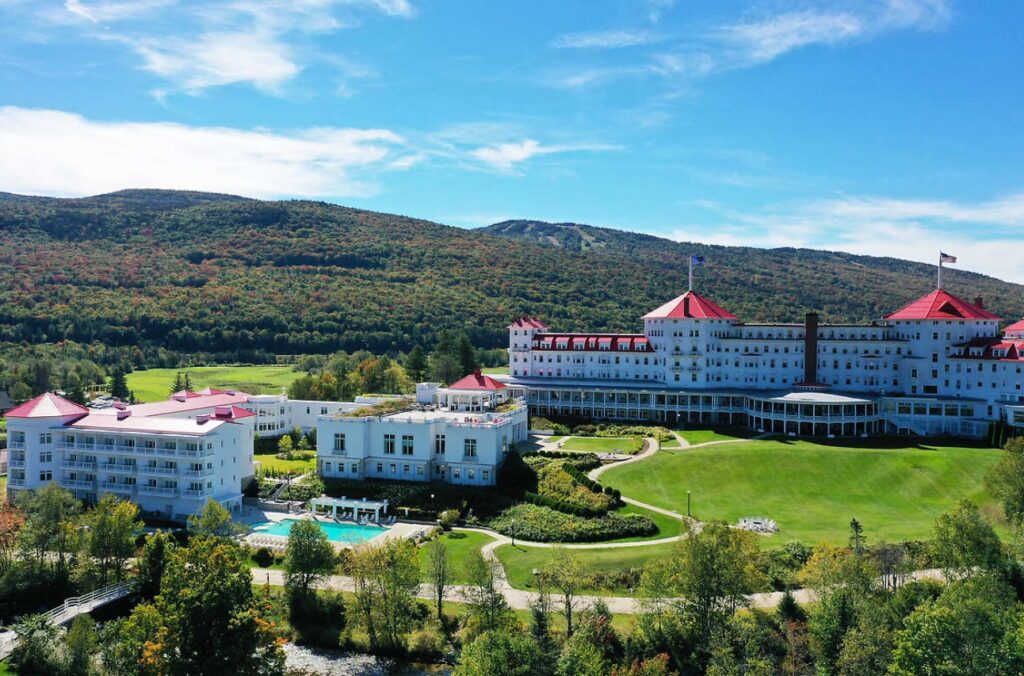
Located in New Hampshire’s White Mountain region, the resort offers trailheads right outside.
Features & Trail Access
- Over 2,000 miles of trails accessible from or near property
- Guided hikes, shuttle to nearby trailheads
- Full resort amenities (spa, dining, recreation)
Pros
- Blend of comfort and extensive trail options
- Excellent for families or groups
- Strong support for trail info and guided services
Cons
- Some trails require shuttle
- Weather in mountains can be unpredictable
- Premium resort cost
Pricing & Booking
- Rates vary by season; book via Omni’s official site or travel agencies.
- Use case: for trails plus resort comfort — great for mixed groups (some hike, some relax).
Enchantment Resort, Sedona, Arizona (USA)
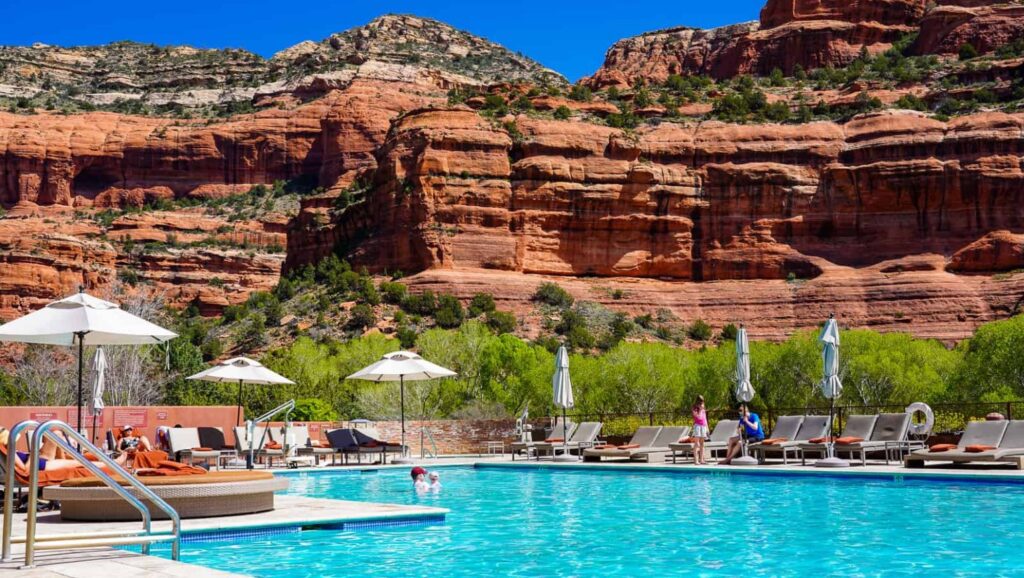
Positioned in the red rock terrain of Sedona, the resort runs guided hikes and has trail connections.
Features & Trail Access
- Trail House concierge directs you to hikes
- Red rock, canyon, vortex, and Grand Canyon day hikes
- Full wellness, spa, adventure services
Pros
- Unique landscape and trail diversity
- Excellent guided services
- Luxury comfort combined with trail immersion
Cons
- More suited to day hikes; remote multi-day treks may require travel
- Cost is high
- Seasonal demand
Pricing & Booking
- Book via Enchantment’s website or partner booking sites.
- Use case: for hikers who want variety in terrain, guided hikes, and premium stay.
Skytop Lodge, Poconos, Pennsylvania (USA)
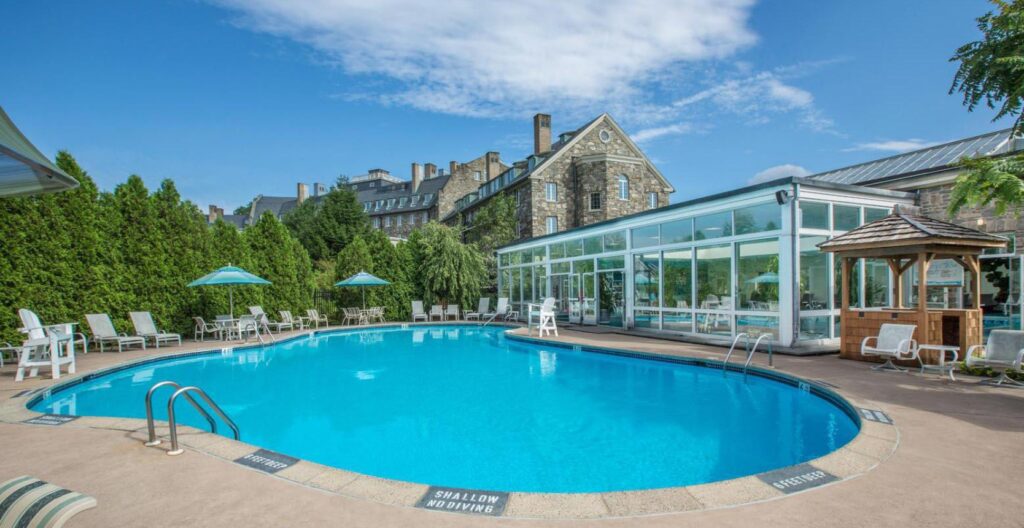
This property includes on-premise trails of varying lengths.
Features & Trail Access
- Trails like Lake Trail, Rhododendron Swamp, Stable Trail
- Naturalist-led walking programs
- Rustic lodge setting with full amenities
Pros
- Trails suitable for all levels
- Accessible and comfortable
- Good balance between nature and convenience
Cons
- Not for high alpine trekking
- Fewer extreme trail options
- May be busy in peak times
Pricing & Booking
- Rates depend on season; booking via lodge’s official site or booking platforms.
- Use case: ideal for casual to moderate hikers, families, or nature lovers.
Comparing Lodging Types & Use Cases
When choosing an accommodation with hiking access, consider your trip style and preferences. Below is a conceptual comparison (without table) in prose:
- Luxury resorts vs rustic huts: Resorts (like Fairmont, Omni, Enchantment) provide upscale amenities and comfort, suited for travelers who want hiking plus pampering. Mountain huts (like Rifugio Lagazuoi) are minimalist and best for serious hikers prioritizing trail proximity and cost over comfort.
- Mixed trail resorts vs trail-only lodgings: Some lodgings have a mix of easy, moderate, and advanced trails (Omni, Skytop). Others are focused on high mountain treks (Rifugio Lagazuoi). Choose based on your fitness and trail goals.
- Remote vs accessible: Remote lodgings reduce crowds but require more planning (transport, weather). Accessible ones are easier logistics but may have more visitors.
- Guided vs self-guided support: Resorts often offer guide services, shuttle support, maps. Huts may rely on self-navigation or local alpine clubs.
- Seasonal viability: Some lodgings are only open in summer; resorts may offer year-round stays.
Use cases:
- If you want luxury + trail variety: go for resorts like Fairmont or Enchantment.
- If you want high alpine immersion and lower cost: choose huts like Rifugio.
- For family or mixed activity groups: resorts with easy & moderate trails (Skytop, Omni).
- For remote treks: chain lodging across a trail corridor (e.g. inn-to-inn along a long trail route like Grande Traversata delle Alpi).
Gear & Product Recommendations to Enhance Your Stay
To fully enjoy hiking-friendly lodgings, some specialized gear is beneficial. Below are five real products (with details, comparison, pros/cons, use cases, where to buy) that complement your lodging + trail experience.
HILLWANDER Rucksack 35L
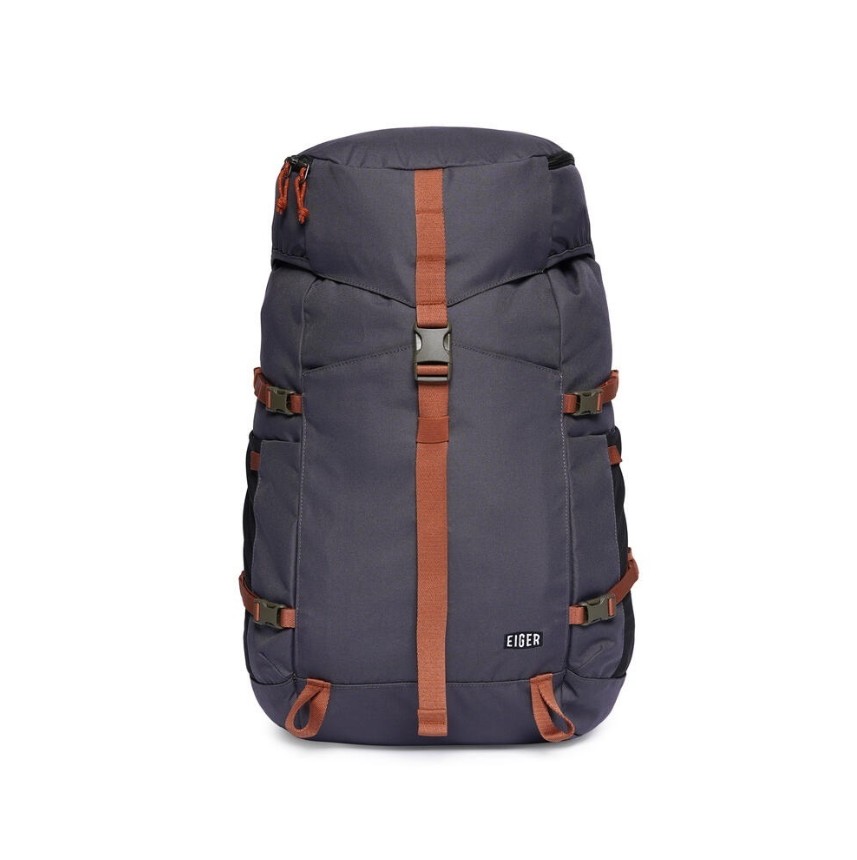
A lightweight, ergonomic hiking backpack with 35-liter capacity, suitable for day hikes from lodging.
Features & Specs
- Volume: 35 L
- Ventilated back panel, hydration sleeve
- Multiple pockets, adjustable straps
- Approx-price: Rp 729,000 (based on listing)
Pros
- Just right for day-hike loads (water, snacks, jacket)
- Comfortable with ventilation
- Good organizational pockets
Cons
- Not enough for multi-day treks
- Midweight for very minimalists
Use Case & Why Needed
- Useful for lodging guests doing day hikes; carry essentials without overpacking.
Where to Buy / How to Buy
- Available via the listing (merchant). You can click the product link above and purchase via their e-commerce platform. Consider checking local outdoor gear shops too for fitting.
Naturehike NH19JJ006 Folding Bed
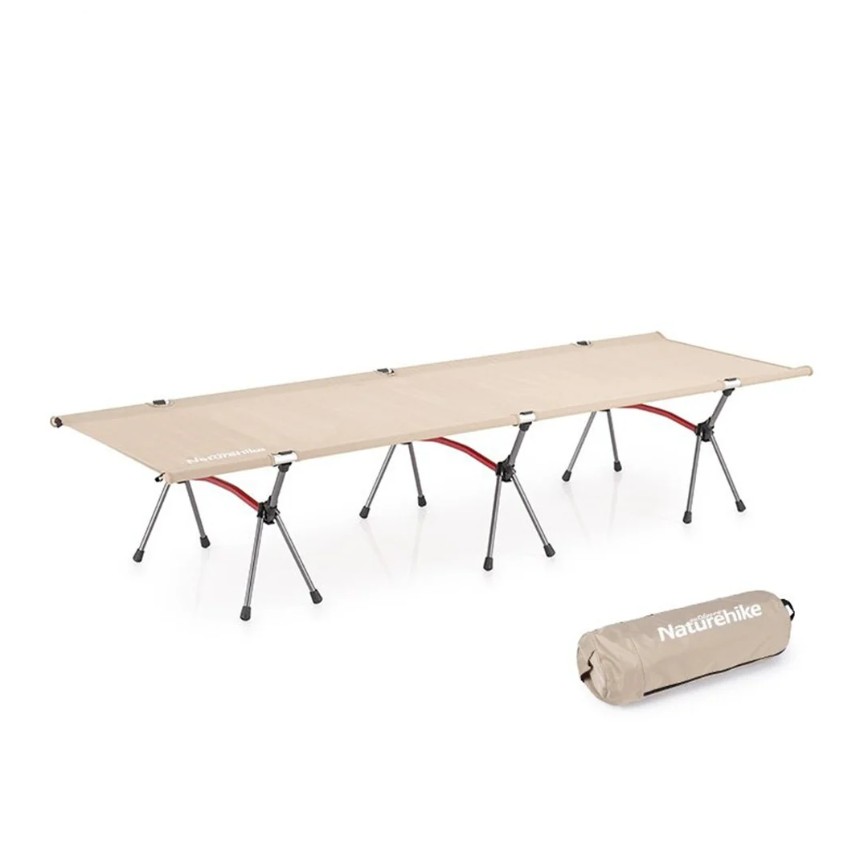
A foldable cot ideal for hikers staying in huts or rustic lodgings, or to bring along for trail refuges.
Features & Specs
- Lightweight frame (aluminum)
- Easy fold/unfold
- Carry bag included
- Approx price: Rp 1,540,000
Pros
- Adds comfort in minimal lodgings
- Portable and easy to carry
- Elevates you off ground
Cons
- Additional weight to carry
- Not needed in full resorts
Use Case
- For trekking routes with huts that offer minimal bedding but allow bringing your cot. Or for comfort camping adjunct to your lodging stay.
Where to Buy / How to Buy
- Available via the product link (merchant). Purchase via the online platform, check shipping, and verify specs.
6‑Person Pole‑Supported Camping Area

A large shelter or common area tent useful as auxiliary lodging or group base near trailheads.
Features & Specs
- Accommodates up to 6 people
- Pole-supported frame, roomy interior
- Approx price: Rp 1,324,500
Pros
- Great for group lodging near trails
- Can serve as common area or gear storage
- Easy assembly
Cons
- Heavy and bulky
- Only useful in mild weather
Use Case
- As a support base near trailheads when your lodging is slightly farther. Or for group travelers who want shared space.
Where to Buy
- Available via merchant link; purchase via the e-commerce listing.
Bigadventure Pangrango 2‑Person Tent
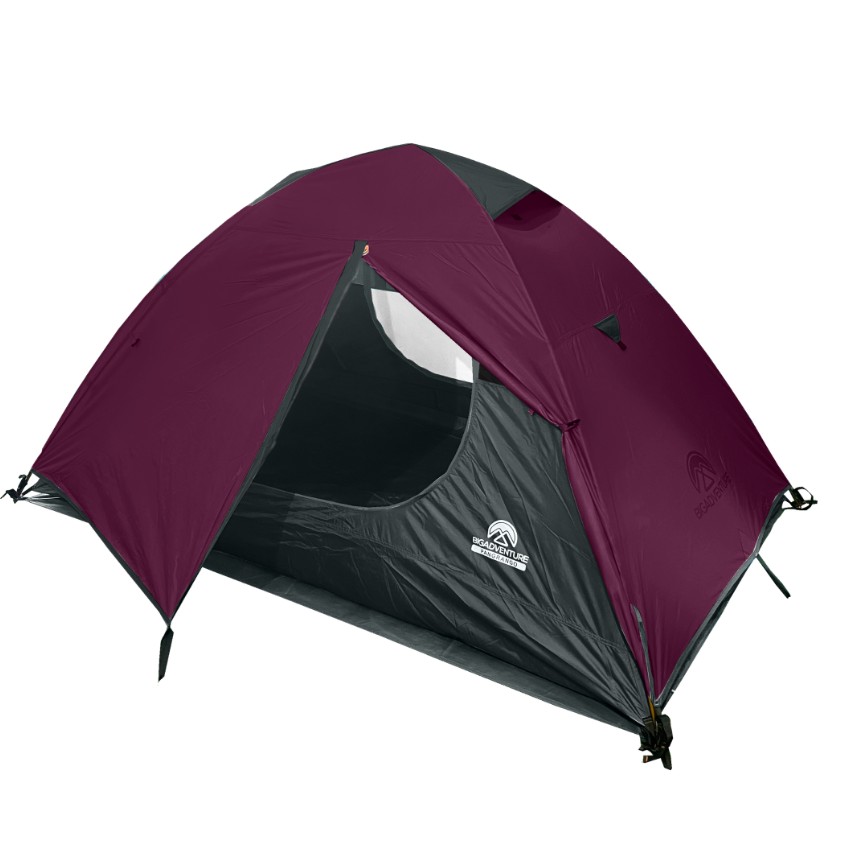
A compact two-person tent suitable for side overnight stays or as backup lodging near trails.
Features & Specs
- Two-person capacity
- Weather resistant
- Compact and lightweight
- Approx price: Rp 920,550
Pros
- Great backup or additional lodging
- Easy to carry
- Flexible for trail nights
Cons
- Not comfortable compared to lodgings
- Minimal shelter
Use Case
- When lodging is full or remote; you can camp near trailheads and return to your main lodging the next day.
Where to Buy
- Use the product link to access merchant site and purchase.
See also: Family Suites in Hotels In Malaysia
Comparing the Gear: Use Case & Recommendations
- The HILLWANDER 35L rucksack is indispensable for day hikes from lodging — light, comfortable, and practical.
- The NH19JJ006 folding bed is for those staying in huts or minimal lodgings wanting added sleep comfort.
- The 6-person shelter is for group support near trailheads when lodging is slightly removed.
- The Pangrango tent is tactical backup lodging in case your trail overnight falls short of lodging.
- Pair these based on your trip: e.g. day hikers just need the rucksack; multi-night trekkers might carry tent + cot for flexibility.
How These Products Enhance Your Lodging Experience
- A good day pack ensures you don’t overload and can comfortably hike out of your lodging.
- A folding cot improves sleep quality in basic huts.
- A group shelter or tent provides flexibility when lodging is sparse or fully booked.
- They allow blending lodging stability with trail adaptability — solving issues when lodgings are spaced apart or full.
Where & How to Book Accommodations with Hiking Opportunities
Booking Strategies
- Official lodging websites. Always check the property’s own site first (e.g. “Fairmont Chateau Lake Louise”).
- Outdoor / adventure lodging platforms. Some niche sites list lodgings focused on trail access.
- Travel agencies / tour operators. They sometimes have bundle deals (lodging + guided hikes).
- Direct contact. Especially for huts or remote lodgings, emailing or calling gives latest status.
- Check trail corridor lodging chains. In long trails (e.g. GTA in Italy) there are “posti tappa” or stage lodgings along the route.
Price Ranges & Seasonal Differences
- Luxury lodgings may charge hundreds of USD per night in peak season.
- Mountain huts / refuges often charge modest rates, sometimes per bunk.
- Off-season stays or shoulder seasons may offer discounts or closures.
- Consider booking early for premium trail seasons.
Booking Tips & Warnings
- Confirm trail access and lodging open dates.
- Ask about shuttle services to isolated trailheads.
- Check cancellation policies—weather may force itinerary changes.
- In remote trails, lodging can sell out early — book ahead.
- Verify what amenities are included (meals, gear support, guide).
Use Cases & Problem Solving
Here are specific problems travelers face, and how accommodations + gear/popular lodgings solve them:
Problem: Trailhead is far from lodging
Solution: Stay in a lodging that has direct trail access (e.g. Omni or Fairmont). Use gear (rucksack) to minimize need to carry extra weight.
Problem: Lodging is minimal / basic (hut) and uncomfortable
Solution: Bring a lightweight folding bed or self-inflating pad to enhance comfort. Use the hut just for shelter and rely on own gear.
Problem: Lodging along long trails is not continuous
Solution: Use a mix of fixed lodgings and tent / shelter gear between. E.g. stay in inns when available, camp in tent when not.
Problem: Booking logistics & uncertainty
Solution: Use flexible booking, book early, and check lodging directly. Stay near trails with multiple lodging options (e.g. trail corridor systems).
Problem: Mixed group interests (some want comfort, some want rugged)
Solution: Choose a resort with both trail and comfort amenities, or a lodging that offers a range of trail difficulty. That way, hikers can go out, non-hikers relax.
Final Tips & Best Practices
- Always carry a lightweight day pack (e.g. the 35L).
- Pack essential gear but travel light — lodgings help offload heavy items.
- Check altitude, weather, and trail difficulty near lodging.
- Balance your lodging choice: not too remote (logistics pain), not too urban (losing nature feel).
- Engage with lodging staff or local guides — they know insider trails.
- Respect local ecology — choose lodgings that follow sustainable / leave-no-trace practices.
FAQ
Q1: How far in advance should I book a hiking-access lodging?
A1: For peak hiking seasons, especially in well-known mountain regions (Alps, Rockies, Dolomites), book at least 3–6 months ahead. For remote huts, some open booking windows only months ahead. Always verify opening schedules.
Q2: What gear do I absolutely need when lodging near trails (versus camping)?
A2: A good day pack (20–35 L), lightweight rain shell, trekking poles, hydration system, trail map/GPS, proper hiking boots. The heavier sleeping gear is more optional if lodging includes bedding.
Q3: Are there lodging networks or trails where accommodations are laid out sequentially (inn-to-inn treks)?
A3: Yes. Some trails (e.g. in Europe) operate with inn-to-inn systems where hikers stay each night in lodges or guesthouses. For example, the Grande Traversata delle Alpi (GTA) in Italy uses “posti tappa” lodgings spaced along the route.

